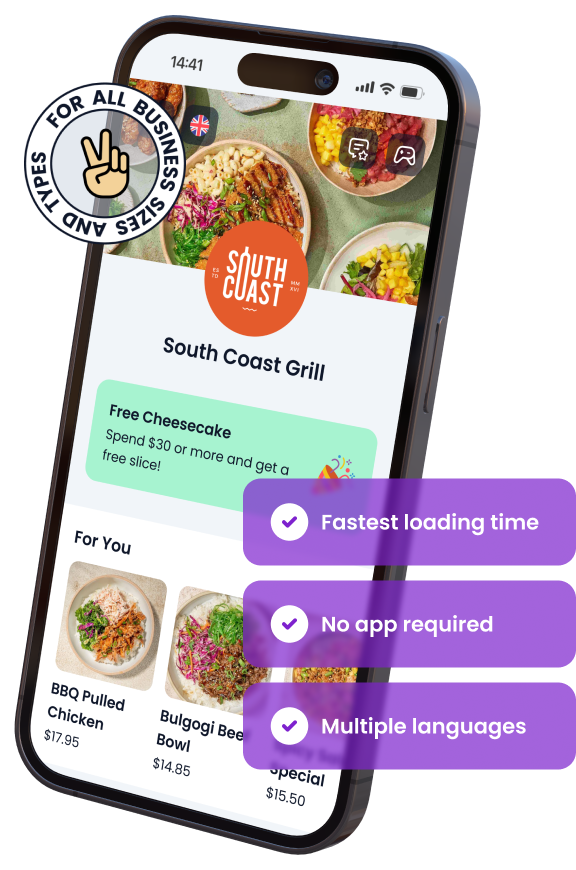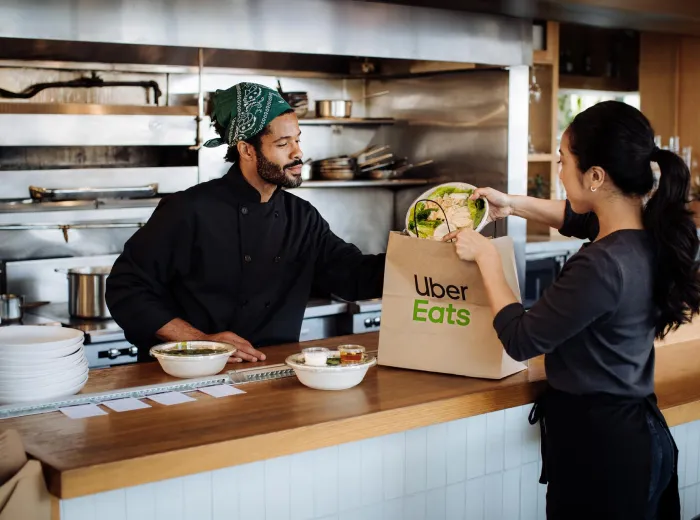

How Much Money Do Restaurant Owners Make Each Year in Abu Dhabi?
Abu Dhabi, a thriving metropolis known for its luxury, growing tourism, and diverse population, offers a lucrative market for aspiring and established restaurant owners. The city’s rapidly expanding food and beverage sector draws entrepreneurs from all corners of the globe, attracted by the potential for high returns. But while the restaurant scene in Abu Dhabi is full of opportunity, success isn’t guaranteed.
For restaurant owners, understanding how much they can expect to make annually is a critical factor when planning their business. Profitability in Abu Dhabi’s restaurant industry depends on a variety of elements, from operational efficiency and location to the type of restaurant and target market. Whether you’re running a fine dining establishment or a fast-food joint, your income will vary based on multiple factors unique to the region.
In this guide, we’ll break down the potential earnings of restaurant owners in Abu Dhabi, looking at everything from average profit margins to key cost drivers. We’ll also explore the strategies that successful restaurant owners use to maximize profitability, and examine real-world case studies to give you a clearer picture of what to expect.
Would you like to listen our deep-dive conversation about this article?
Factors Influencing Restaurant Owners' Income in Abu Dhabi
The amount of money a restaurant owner can earn in Abu Dhabi depends on a variety of factors that impact both revenue and profitability. While the region offers significant opportunities, certain challenges and nuances can greatly influence earnings. Let’s break down the key factors that directly affect restaurant owners’ income in the city.
Economic Environment in Abu Dhabi
Abu Dhabi’s economic climate plays a substantial role in restaurant success. The city’s wealth, supported by oil revenues, drives a high standard of living and consumer spending, but it also means operating costs are higher. Additionally, the economy’s reliance on tourism and expatriates affects the restaurant sector in several ways:
- Tourist influxes drive seasonal spikes in revenue.
- Expat population trends influence demand for international cuisines.
- Economic diversification can lead to new opportunities in hospitality.
A stable and growing economy provides strong opportunities, but economic downturns or shifts can also reduce consumer spending, impacting overall revenue.
Local Consumer Spending Habits
Understanding how locals and expatriates spend money on dining is crucial. In Abu Dhabi, consumers tend to favor luxury dining experiences, but there’s also a growing appetite for affordable, casual dining. Key spending habits that influence income include:
- High demand for luxury and fine dining from affluent residents and tourists.
- Increased interest in casual and fast-casual dining among middle-income earners and younger consumers.
- Cultural preferences for communal dining and traditional foods.
Owners who cater to specific market segments—such as families, professionals, or tourists—can tailor their menus and pricing to maximize income.
Competition in the Restaurant Market
Abu Dhabi’s restaurant industry is highly competitive, with new establishments opening regularly to meet diverse demands. As competition rises, restaurants need to differentiate themselves to attract customers. Factors related to competition that influence income include:
- Market saturation in certain areas, like the Corniche and Yas Island.
- Innovation and uniqueness in cuisine, décor, or service models can set a restaurant apart.
- Brand loyalty and reputation play a major role in customer retention and steady revenue streams.
Competition can drive up marketing costs and put pressure on pricing strategies, directly impacting overall profitability.
Restaurant Types and Their Average Profit Margins
The type of restaurant you operate in Abu Dhabi has a significant impact on your profit margins. Different dining concepts come with varied overheads, target markets, and pricing strategies, all of which affect your bottom line. Let’s explore the most common restaurant types and the profit margins you can expect from each.
Fine Dining vs. Casual Dining: Profit Differences
Fine dining establishments in Abu Dhabi often target a wealthier clientele, offering premium experiences that include top-tier service, gourmet cuisine, and exclusive locations. While they typically generate high revenues per customer, their operating costs are also substantial. Casual dining, on the other hand, caters to a broader audience with more accessible price points but operates on slimmer margins.
- Fine dining:
- Average profit margins: 10-15%.
- High operational costs due to luxury ingredients, decor, and staffing.
- Fewer customers but higher revenue per ticket.
- Casual dining:
- Average profit margins: 15-20%.
- Lower overhead but higher volume of customers.
- Focus on efficiency and turnover to maintain profitability.
Both restaurant models can be profitable, but fine dining establishments often take longer to reach stable profitability compared to casual dining, where customer turnover is higher.
Cafes and Coffee Shops: Revenue Expectations
Cafes and coffee shops have become increasingly popular in Abu Dhabi, catering to both local residents and expatriates. These businesses typically offer a wide range of beverages and light meals with a focus on quick service and a relaxed atmosphere. The margins in this segment can be quite attractive due to relatively low food costs and the high markup on beverages like coffee.
- Average profit margins: 20-30%.
- Low food and beverage costs compared to other restaurant types.
- Potential for high repeat customer traffic.
- The ability to diversify income streams through retail sales (e.g., packaged coffee).
While cafes enjoy higher profit margins, they must consistently attract customers to maintain revenue, as competition in this segment is fierce.
Fast Food and QSR Chains: What to Expect
Fast food and quick-service restaurants (QSR) in Abu Dhabi cater to busy consumers seeking affordable, convenient meals. These establishments rely on volume rather than premium pricing, leading to relatively low margins per transaction but high overall revenue due to frequent turnover.
- Average profit margins: 5-10%.
- Low ticket prices but high customer volume.
- Efficient, standardized operations help reduce costs.
- Heavy reliance on consistent marketing and promotions.
Fast food and QSR chains benefit from brand recognition and repeat business, but their success hinges on high efficiency and operational consistency to keep margins steady. Despite lower margins, the scalability of these businesses can result in substantial overall profits.
Key Costs that Impact Restaurant Profits in Abu Dhabi
Running a successful restaurant in Abu Dhabi requires a deep understanding of the costs involved. High operational expenses in areas like rent, labor, and food sourcing can significantly affect profit margins. Let’s break down the most important cost factors that impact restaurant profits in Abu Dhabi.
Rent and Utilities: High Costs in Premium Locations
One of the largest expenses for restaurant owners in Abu Dhabi is rent, especially in prime areas such as the Corniche, Saadiyat Island, or Yas Island. Securing a premium location can drive foot traffic and elevate brand perception, but it also comes with high price tags.
- Prime locations: Rent can take up 15-20% of your revenue.
- Secondary locations: Rent in less premium areas may only account for 5-10%, but foot traffic can be lower.
- Utility costs: Air conditioning, electricity, and water are critical in the hot climate and can significantly increase monthly bills.
Rent and utilities are unavoidable expenses, but choosing a location wisely can help balance visibility and costs.
Labor Costs and Wages: What You Need to Know
Labor costs are another significant expense, especially in a city like Abu Dhabi where restaurants are expected to maintain high service standards. The UAE’s labor laws also require benefits such as housing allowances, medical insurance, and end-of-service gratuities for employees, adding to the cost burden.
- Wage expectations: Salaries vary depending on the type of restaurant and staff roles.
- Fine dining: Staff salaries are higher due to required skills and experience.
- Casual dining and fast food: Lower wages but higher staff turnover can increase recruitment costs.
- Additional benefits: Housing, transportation, and medical insurance must be factored in for expatriate employees.
Managing labor costs efficiently while maintaining service quality is key to improving profitability in Abu Dhabi’s competitive market.
Ingredient Sourcing and Food Costs
Food costs can vary widely depending on the type of restaurant and the ingredients used. While fine dining restaurants may import premium ingredients, casual dining establishments often rely on local or regional suppliers to reduce costs. Rising import fees and logistical challenges can also inflate prices.
- Food cost percentage: For most restaurants, food costs typically range between 25-35% of total revenue.
- Fine dining: Higher-end ingredients like imported meats or seafood increase food costs.
- Casual dining: More affordable, locally sourced ingredients reduce costs.
- Supply chain challenges: Importing ingredients from abroad can increase both cost and risk due to delays or shortages.
Effective menu planning and portion control can help keep food costs in check, ensuring they don’t eat into profits.
Licensing and Permits: The Hidden Costs
Abu Dhabi has strict regulations for restaurant operations, and securing the necessary licenses and permits can be both time-consuming and costly. These legal requirements vary depending on the type of restaurant, its size, and its location.
- Initial licensing fees: Can range from AED 10,000 to AED 50,000 depending on the type of license (e.g., trade license, food safety license).
- Alcohol license: If your restaurant serves alcohol, you’ll need a separate license, which can be costly.
- Annual renewals: In addition to initial costs, licenses must be renewed annually, adding to ongoing expenses.
Understanding and budgeting for these legal costs is essential, as failure to comply with regulations can result in hefty fines or closure.
Average Annual Earnings Based on Restaurant Size and Type
The size and type of your restaurant in Abu Dhabi significantly influence your annual earnings. From small, family-run eateries to large chain establishments, the revenue potential varies widely based on factors like seating capacity, pricing strategy, and customer volume. Let’s explore the expected annual earnings for different types and sizes of restaurants.
Small Restaurants: Expected Earnings
Small restaurants, including family-run cafes and boutique dining spots, often focus on niche markets or specialized menus. These establishments typically have fewer seats, lower overhead costs, and can sometimes operate with a more intimate staff size, but their revenue potential is limited by their capacity.
- Seating capacity: Usually 30-50 seats.
- Annual revenue range: AED 500,000 to AED 1.5 million.
- Challenges: Limited seating means relying heavily on consistent customer flow, often requiring a strong focus on customer loyalty and word-of-mouth marketing.
While small restaurants may have lower revenue potential, they can enjoy healthy profit margins if managed efficiently.
Medium-Sized Restaurants: Revenue Projections
Medium-sized restaurants in Abu Dhabi strike a balance between customer volume and operational costs. With more seats, a broader menu, and often a more diverse customer base, these restaurants are positioned to generate higher annual revenues compared to smaller venues.
- Seating capacity: Typically 50-100 seats.
- Annual revenue range: AED 1.5 million to AED 4 million.
- Advantages: Greater flexibility in pricing, larger customer base, and the ability to host special events or cater to larger groups.
Medium-sized establishments have more growth potential than smaller restaurants but also face higher operational and labor costs. Profitability depends on balancing overhead with customer volume.
Large-Scale Operations: Profit Potential
Large restaurants and chains, including fine dining establishments and franchise operations, typically generate the highest revenues but come with significantly higher costs. These restaurants often cater to affluent clients, tourists, or corporate groups, and can leverage economies of scale to reduce per-unit costs.
- Seating capacity: Over 100 seats.
- Annual revenue range: AED 4 million to AED 10 million or more.
- Revenue drivers: High customer volume, premium pricing for luxury dining, and often multiple revenue streams (e.g., catering services, private events).
While large-scale restaurants generate impressive revenues, their profit margins can be slimmer due to high operational costs. Success in this category often relies on strong brand recognition and maintaining a high level of service quality.
Each size and type of restaurant offers different levels of revenue potential, but profit margins can vary significantly based on operational efficiency, customer retention, and strategic pricing.
The Role of Management and Operations in Profitability
Effective management and streamlined operations are crucial to the success of any restaurant in Abu Dhabi. A well-run establishment can significantly increase profit margins by optimizing resources, reducing waste, and improving the customer experience. Let’s explore the critical aspects of management and operations that directly impact profitability.
Efficient Management for Better Margins
Strong leadership and efficient management are the cornerstones of a profitable restaurant. Successful restaurant owners and managers focus on several key areas to ensure smooth day-to-day operations while maximizing revenue.
- Staff management: Proper scheduling, training, and team management lead to improved service and reduced turnover rates.
- Inventory control: Accurate inventory tracking helps avoid over-ordering or running out of stock, both of which can cut into profits.
- Technology adoption: Using POS systems and management software can streamline operations, reduce human errors, and provide data-driven insights for decision-making.
- Delegation: Empowering team members with clear roles and responsibilities allows the manager to focus on high-level strategies rather than getting caught in daily tasks.
Efficient management improves productivity and cost control, which directly boosts profit margins.
The Importance of Customer Retention
In Abu Dhabi’s competitive restaurant scene, attracting new customers is important, but retaining them is key to long-term profitability. Repeat customers typically spend more over time, and their loyalty helps maintain steady revenue. Here’s how management can boost customer retention:
- Personalized service: Recognizing regular customers and offering tailored experiences helps build loyalty.
- Loyalty programs: Offering discounts or rewards through loyalty programs encourages repeat visits. Digital platforms like Menuviel make it easy to integrate loyalty systems into restaurant operations.
- Feedback systems: Actively seeking and responding to customer feedback shows a commitment to service improvement, encouraging patrons to return.
Focusing on customer retention reduces marketing costs and creates a reliable income stream, both of which improve overall profitability.
How to Minimize Operational Waste
Operational waste can take many forms, from food wastage to inefficient use of staff time. Minimizing waste is a crucial aspect of increasing a restaurant’s profitability. Common strategies to reduce waste include:
- Portion control: Proper portioning reduces food waste and helps control food costs.
- Energy efficiency: Implementing energy-saving practices, like using energy-efficient appliances or optimizing air conditioning usage, can significantly cut utility costs.
- Streamlined processes: Identifying bottlenecks in kitchen or service workflows and improving processes can save time and reduce labor costs.
Reducing waste in both food and operations allows for better cost management and increases the potential for higher profit margins.
What Is the Typical Net Profit Margin for Abu Dhabi Restaurants?
Understanding the typical net profit margin for restaurants in Abu Dhabi is crucial for business owners looking to evaluate their financial performance. The net profit margin represents the percentage of revenue that remains after all operating expenses, taxes, and other costs are subtracted. This figure varies based on several factors, including the type of restaurant, location, and operational efficiency.
Understanding Gross vs. Net Profit
Before diving into net profit margins, it’s important to distinguish between gross profit and net profit:
- Gross profit: This is the revenue a restaurant earns after deducting the cost of goods sold (COGS), such as ingredients and food supplies.
- Net profit: This is the amount left after deducting all expenses, including labor, rent, utilities, marketing, taxes, and other operational costs.
While gross profit helps assess how well a restaurant manages its direct costs, net profit provides a clearer picture of the overall financial health and profitability of the business.
Typical Net Profit Margins for Different Restaurant Types
Net profit margins for restaurants in Abu Dhabi vary depending on the type of establishment. Here’s a breakdown of the average margins across different restaurant categories:
- Fine dining:
- Net profit margin: 5-10%.
- High operating costs (luxury ingredients, premium locations, and top-tier staff) often result in lower net margins, despite higher revenues per customer.
- Casual dining:
- Net profit margin: 10-15%.
- These establishments often balance moderate prices with high customer turnover, leading to healthier margins than fine dining.
- Cafes and coffee shops:
- Net profit margin: 15-20%.
- Lower food costs and high markup on beverages contribute to higher net margins for cafes, especially in prime areas.
- Fast food and quick-service restaurants (QSR):
- Net profit margin: 5-8%.
- While these restaurants typically generate high customer volume, their lower pricing structure leads to slimmer margins.
Overall, net profit margins in Abu Dhabi tend to be slightly lower than global averages due to high rent, labor, and utility costs, especially in prime locations.
How Abu Dhabi’s Tax and Fees Impact Net Income
While Abu Dhabi offers many business-friendly incentives, there are certain taxes and fees that can impact a restaurant’s net profit margin:
- Value-Added Tax (VAT): The UAE imposes a 5% VAT on all restaurant sales, which affects pricing and net income.
- Municipal fees: Restaurants in certain locations may need to pay additional municipal fees, often based on a percentage of revenue.
- Licensing fees: Annual renewal of restaurant licenses, food safety certifications, and other permits can further reduce profit margins.
While these taxes and fees are relatively low compared to other international markets, they still contribute to the overall cost burden for restaurant owners in Abu Dhabi.
In summary, restaurant owners in Abu Dhabi should aim for a net profit margin of 10-15%, but achieving this depends on efficient management of costs and maximizing customer volume. Understanding the local cost structure and pricing strategies is key to maintaining a healthy bottom line.
Seasonal Trends and Their Impact on Restaurant Income
Seasonal trends play a crucial role in shaping restaurant income in Abu Dhabi. With its hot desert climate, bustling tourism sector, and a large expatriate population, the city experiences significant fluctuations in customer traffic throughout the year. Understanding and preparing for these seasonal shifts is essential for maintaining profitability and managing cash flow effectively.
Tourist Seasons and Revenue Boosts
Tourism is a major driver of restaurant income in Abu Dhabi, and tourist seasons can greatly influence foot traffic and revenue. Key factors include:
- Peak tourist seasons: The cooler months, from November to March, are peak times for tourism, with an influx of international visitors. This period often brings a noticeable uptick in customer volume, particularly in areas popular with tourists, such as Yas Island, Saadiyat Island, and the Corniche.
- Event-driven spikes: Major events like the Abu Dhabi Grand Prix, international exhibitions, and cultural festivals attract large crowds, offering restaurants opportunities to capitalize on increased demand.
Restaurants that cater to tourists by offering international cuisine or marketing heavily during these months can see substantial revenue increases.
Off-Peak Seasons: How to Maintain Profits
While the winter months bring a surge in activity, the hotter summer season, particularly from June to September, can lead to a dip in customer traffic as many residents and expatriates leave for vacation. Restaurants must implement strategies to maintain profitability during these slower months:
- Local-focused promotions: Offering discounts, loyalty programs, or special summer menus tailored to locals can help attract business when tourism is low.
- Delivery and takeaway services: With many residents avoiding outdoor dining during the heat, focusing on delivery and takeaway options can keep sales steady.
- Collaborations with hotels and resorts: Partnering with hotels to offer meal packages or promotions can help attract tourists who stay indoors due to the high temperatures.
By adapting to off-peak seasons with targeted promotions and alternative revenue streams, restaurants can reduce the impact of slower months on their overall income.
Holiday Seasons and Cultural Celebrations
Cultural and religious events, such as Ramadan and Eid, also significantly affect dining habits and restaurant operations in Abu Dhabi. These occasions often come with unique challenges and opportunities for restaurant owners:
- Ramadan: During the holy month of Ramadan, many restaurants experience a change in operating hours, with business primarily picking up after sunset. Iftar (the meal that breaks the fast) becomes a significant event, and restaurants offering special iftar menus can see increased bookings.
- Eid al-Fitr and Eid al-Adha: These holidays bring large family gatherings and a boost in dining out, particularly for restaurants offering traditional meals.
Planning for these holidays by creating special menus, promotions, and extended hours can help maximize revenue during these culturally significant periods.
In conclusion, adapting to Abu Dhabi’s seasonal patterns is key to sustaining restaurant profitability. By capitalizing on tourist seasons, navigating off-peak months with creative strategies, and embracing cultural celebrations, restaurant owners can balance out the fluctuations in customer demand throughout the year.
Case Studies: Successful Restaurant Owners in Abu Dhabi
Learning from the success stories of restaurant owners in Abu Dhabi can offer valuable insights into what it takes to thrive in the city’s competitive dining scene. From fine dining establishments to casual eateries, each success story highlights strategies that helped these owners stand out, optimize their operations, and boost profitability.
Insights from Fine Dining Restaurants
Fine dining restaurants in Abu Dhabi are known for their luxurious settings, premium menus, and high-end clientele. One such success story is Coya Abu Dhabi, a Latin American-inspired fine dining restaurant that has consistently ranked as one of the top dining spots in the city. Here’s how they achieved success:
- Unique concept and ambiance: Coya blended high-end Peruvian cuisine with a vibrant, immersive dining experience that resonates with both local and international clientele.
- Strategic location: Situated on Al Maryah Island, a premium area known for luxury shopping and entertainment, the restaurant capitalized on high foot traffic from affluent tourists and residents.
- Exclusive events: Hosting private events, culinary masterclasses, and themed evenings helped differentiate Coya from competitors and attract a loyal customer base.
By offering a distinctive, high-end experience and leveraging its prime location, Coya was able to build a strong brand and maintain profitability in the fine dining market.
Lessons from Casual Dining and Cafes
Casual dining and cafes represent a large portion of Abu Dhabi’s restaurant market. LARTE, an Italian café and restaurant located in Manarat Al Saadiyat, offers a strong example of how to succeed in this sector. Here’s what contributed to LARTE’s success:
- Affordable luxury: LARTE positioned itself as a casual yet upscale dining option, offering premium Italian dishes at accessible prices.
- Cultural integration: The restaurant embraced the cultural and artistic environment of Manarat Al Saadiyat, incorporating art exhibitions and workshops to attract customers interested in both food and culture.
- Loyal customer base: Through effective social media marketing and word-of-mouth promotion, LARTE built a community of regular customers who value the café’s blend of quality and atmosphere.
By combining a laid-back dining style with a focus on culture and creativity, LARTE thrived by catering to a wide range of customers, from tourists to local art enthusiasts.
How Small Local Eateries Succeed
Not all success stories come from high-end or well-known restaurants. Small, locally owned eateries can also achieve impressive results by focusing on their niche. Al Fanar Restaurant a proud client of Menuviel, known for its authentic Emirati cuisine, offers an example of how a small, traditional restaurant can stand out and succeed in Abu Dhabi’s diverse dining landscape:
- Cultural authenticity: Al Fanar offers a menu deeply rooted in Emirati heritage, attracting both locals and tourists looking for an authentic experience.
- Modest pricing: The restaurant’s affordable menu caters to a broad demographic, allowing it to compete with more commercialized restaurants while maintaining high customer volume.
- Targeted marketing: Al Fanar leveraged digital platforms to promote its unique offerings, emphasizing its cultural authenticity to attract customers interested in traditional cuisine.
By staying true to its cultural roots and offering a dining experience that reflects Emirati traditions, Al Fanar Restaurant was able to carve out a successful niche in a competitive market.
These case studies illustrate that success in Abu Dhabi’s restaurant scene can be achieved through a variety of strategies, whether it’s offering a unique fine dining experience, blending casual dining with culture, or staying true to traditional roots. The key is understanding your market, differentiating your concept, and consistently delivering quality.
How to Boost Your Restaurant’s Profitability in Abu Dhabi
In a competitive market like Abu Dhabi, boosting profitability requires more than just good food and service. Successful restaurant owners implement strategies that optimize operations, attract more customers, and increase average spend per customer. Let’s explore actionable steps you can take to improve your restaurant’s profitability.
Marketing Strategies that Drive Sales
An effective marketing plan can significantly increase your restaurant’s visibility and attract more customers. To boost sales, consider these marketing strategies:
- Leverage social media: Platforms like Instagram, Facebook, and TikTok are essential for showcasing your menu, promoting special events, and engaging with your audience.
- Collaborate with influencers: Partnering with local food bloggers or influencers can expand your reach and introduce your restaurant to new customers.
- Run promotions: Offer time-sensitive deals or themed nights to attract new diners, especially during slow periods.
Marketing in Abu Dhabi’s vibrant food scene requires a digital-first approach to capture the attention of both locals and tourists.
Leveraging Delivery Services and Apps
The demand for food delivery has skyrocketed in recent years, and partnering with popular delivery platforms can expand your customer base while driving additional revenue.
- Popular platforms: Use services like Deliveroo, Talabat, and Zomato to reach a wider audience.
- Optimize your delivery menu: Ensure that your most profitable and delivery-friendly items are featured prominently.
- In-house delivery: If feasible, offering your own delivery service can reduce the commissions paid to third-party apps, boosting your profit margins.
By making delivery a key part of your operations, you can tap into the growing demand for convenience without the limitations of in-house seating capacity.
Upselling and Cross-Selling Techniques
Encouraging customers to spend more while dining is one of the easiest ways to increase your average transaction value. Effective upselling and cross-selling can lead to higher revenue without significantly increasing your costs.
- Train staff: Equip your staff with techniques to suggest higher-priced menu items or add-ons, like premium beverages, sides, or desserts.
- Create combo offers: Bundle popular dishes together with a slight discount to encourage customers to spend more.
- Use digital menus: Digital menus with photos and descriptions of premium dishes can entice customers to order higher-priced items.
Upselling and cross-selling create opportunities to enhance the dining experience while boosting your restaurant’s bottom line.
The Power of a Loyalty Program
A well-designed loyalty program not only increases customer retention but also encourages repeat visits, ultimately improving your revenue over time. Here’s how you can implement an effective loyalty program:
- Points system: Reward customers with points for each visit or purchase, which they can redeem for discounts or free items.
- Exclusive offers: Offer loyalty members access to exclusive promotions, early-bird deals, or special events.
- Digital integration: Use platforms like Menuviel to integrate loyalty programs seamlessly into your digital ordering and payment systems, making it easy for customers to track and redeem rewards.
By encouraging repeat business and fostering customer loyalty, you can build a steady stream of revenue that contributes to long-term profitability.
Boosting profitability in your Abu Dhabi restaurant requires a combination of smart marketing, operational efficiency, and customer-focused strategies. By leveraging these tactics, you can increase revenue, improve customer satisfaction, and ensure sustained financial success in a competitive market.
Common Financial Pitfalls and How to Avoid Them
Running a restaurant in Abu Dhabi comes with numerous financial challenges, and even successful operators can fall into costly traps. Avoiding common financial pitfalls is essential for maintaining profitability and ensuring long-term success. Let’s explore the most frequent mistakes restaurant owners make and how to steer clear of them.
Overestimating Initial Revenue Projections
One of the most common mistakes new restaurant owners make is being overly optimistic about their initial revenue projections. While it’s natural to expect high earnings early on, the reality is that building a customer base takes time, and early cash flow might be lower than anticipated.
- Pitfall: Setting unrealistic revenue targets can lead to cash flow problems, overstaffing, or overspending on inventory.
- How to avoid: Create conservative financial projections for the first 6-12 months and prepare for potential slow periods. It’s crucial to have a financial cushion or contingency fund for the initial phase.
By taking a cautious approach to revenue expectations, you can manage your expenses better and avoid cash flow shortages.
Underestimating Ongoing Costs
Many restaurant owners focus too heavily on upfront costs, such as equipment and renovations, while underestimating ongoing operational expenses like utilities, maintenance, and staff wages. These recurring costs can quickly erode profit margins if not carefully managed.
- Pitfall: Ignoring the true cost of utilities, labor, and ongoing maintenance can lead to higher-than-expected expenses, hurting profitability.
- How to avoid: Create a detailed, itemized budget for all fixed and variable expenses, regularly reviewing and adjusting it based on real data.
Understanding your recurring costs is key to keeping your operations sustainable and profitable.
Poor Menu Pricing Strategy
Incorrectly pricing your menu is another financial pitfall that can either scare off customers or eat into your profit margins. If your prices are too high, you risk losing customers to competitors; if they’re too low, you might struggle to cover costs.
- Pitfall: Pricing based on guesswork rather than data can lead to losses or underperformance.
- How to avoid: Conduct a thorough analysis of your food costs, overhead, and competitor pricing to set the right prices. Make sure to factor in taxes, operating costs, and target profit margins.
A well-thought-out menu pricing strategy will balance customer affordability with profitability, ensuring your business remains financially healthy.
Failing to Adapt to Market Trends
Abu Dhabi’s restaurant scene is dynamic, with consumer preferences and industry trends constantly evolving. Restaurants that fail to stay ahead of trends or adapt their offerings may struggle to retain customers and maintain relevance in a competitive market.
- Pitfall: Sticking to outdated menu items or concepts can lead to declining customer interest and lower sales.
- How to avoid: Regularly review market trends, customer preferences, and competitor strategies. Updating your menu or introducing limited-time offers can help you stay competitive.
Keeping your restaurant flexible and responsive to market trends will ensure that you continue to attract and retain customers, contributing to steady revenue growth.
By avoiding these common financial pitfalls, restaurant owners in Abu Dhabi can better manage their expenses, create realistic revenue expectations, and keep their businesses profitable. Sound financial planning and adaptability are the keys to overcoming these challenges and achieving long-term success.
Is Owning a Restaurant in Abu Dhabi Worth the Investment?
Owning a restaurant in Abu Dhabi can be a lucrative venture, but it’s not without its challenges. With a growing population, a high number of affluent residents, and a booming tourism sector, the market offers great potential. However, restaurant owners must also navigate the city’s high operational costs, intense competition, and the unique dynamics of the local market. Let’s evaluate the investment potential in more detail.
Profit Potential vs. Risk
Abu Dhabi offers considerable profit potential, especially for restaurants located in high-traffic areas or those catering to affluent customers and tourists. However, the high cost of rent, utilities, labor, and permits can erode profit margins if not managed carefully.
- Profit potential: With the right concept and execution, restaurants can enjoy healthy profit margins, particularly in the fine dining, casual dining, and cafe sectors.
- Risk factors: High setup costs, economic fluctuations, and fierce competition can pose risks to new and existing restaurants.
Investors must be prepared to handle the risks associated with high operating costs and fluctuating market conditions, but with careful planning, the rewards can outweigh the risks.
Long-Term Outlook for the Abu Dhabi Restaurant Market
The long-term outlook for Abu Dhabi’s restaurant industry remains positive, driven by continued investment in tourism, hospitality, and economic diversification initiatives. Several factors point to sustained growth opportunities:
- Tourism growth: The city’s ambitious tourism strategy, including hosting global events and expanding cultural attractions, promises to bring more international visitors, driving demand for dining options.
- Expatriate community: Abu Dhabi’s large and diverse expatriate population continues to fuel demand for a wide variety of cuisines and dining experiences.
- Economic stability: With a stable economy and supportive government policies for businesses, the restaurant industry has strong growth prospects.
In the long term, investing in a restaurant in Abu Dhabi offers significant potential, particularly for those who can stay agile and adapt to changing consumer preferences and market conditions.
Expert Advice on Investing in Restaurants
Experienced restaurant owners and industry experts in Abu Dhabi advise potential investors to approach the market with both optimism and caution. Key recommendations include:
- Focus on differentiation: Ensure your restaurant offers something unique, whether it’s through menu offerings, atmosphere, or service.
- Stay financially disciplined: Careful budgeting, conservative revenue projections, and a clear understanding of operational costs are essential to maintain profitability.
- Be adaptable: Stay responsive to market trends, consumer preferences, and economic shifts to remain competitive in Abu Dhabi’s dynamic dining landscape.
With the right approach, owning a restaurant in Abu Dhabi can be a rewarding and profitable investment, especially for those who are willing to invest in quality, customer experience, and operational efficiency.
Owning a restaurant in Abu Dhabi presents both significant opportunities and challenges. While the city’s thriving tourism sector, affluent residents, and diverse dining scene offer great potential for profit, high operational costs and fierce competition demand careful planning and execution. By understanding the market, controlling expenses, and staying flexible with business strategies, restaurant owners can capitalize on Abu Dhabi’s dynamic food and beverage industry. Whether you’re running a fine dining establishment, a casual cafe, or a fast-food outlet, success in this market depends on balancing creativity with financial discipline and embracing the unique opportunities the city provides.
ABOUT THE AUTHOR
Erkin Coban
Your Customers Deserve The Best
And we got Menuviel for them.
The fastest and easy-to-use online QR menu with 12+ unique features. Choose Menuviel and elevate your service quality to the next level.
Use free for the first 30 days.

In This Article

Free AI Tools for Restaurants
TRY NOW ➜

Lightning-fast loading pages and images
Your menu loads instantly with optimized images—no waiting, just a smooth browsing experience.







